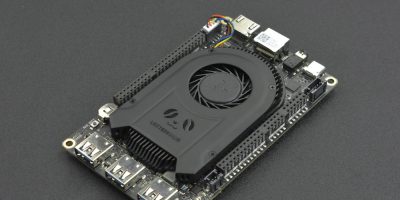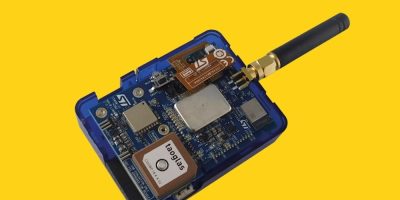Claimed to be the world’s smallest x86 single board computer (SBC), the LattePanda 3 Delta is available from Farnell.
The SBC is the latest addition to the LattePanda family. The pocket-sized hackable computer, measuring 125 x 78 x 16mm. It supports Linux, Windows 10 and Windows 11.
Compared to other SBCs at the same price, the LattePanda 3 Delta offers the highest performance, said Farnell. It features Intel’s 11th generation mobile four-core processor, the N5105. With up to 8Gbyte RAM and 64Gbyte storage, LattePanda 3 Delta is the most cost-effective product yet from DFRobot. It is suitable for artificial intelligence (AI) and IoT applications, smart city, edge computing, smart home, face detection and recognition, artificial intelligence server, intelligent monitoring, voice recognition and cloud machine learning.
It offers developers new levels of creativity, said Romain Soreau, head of single board computing at Farnell. “Designed as the world’s most compact SBC, LattePanda 3 Delta is an exceptional board for space constrained applications which require high performance such as AI localisation, robotics, smart factory, home automation, gaming and handheld devices,” he said.
The LattePanda 3 Delta board supports 4K IPS touch displays. It has a high resolution of 3840 x 2160 pixels, two USB Type C and one mini-HDMI port.
The CPU is up to two times faster than the previous version and the GPU is up to three tunes faster to support 4K HDR video and processor intensive games.
It also supports Wi-Fi 6 and with a transfer speed up to 2.4Gbits per second is 2.7 times faster than Wi-Fi 5. The SBC is also equipped with a USB 3.2 gen2 port that has an high bandwidth, delivering up to 10Gbits per second of throughput which is twice as fast as USB3.2 gen1 (USB3.0). Bluetooth 5.2 is included as standard.
Other features are support for Gigabit Ethernet, 42 expandable interfaces and 2933MHz high-frequency LPDDR4 RAM up to 8Gbyte. Storage has been doubled, up to 64Gbyte and the board also has a watchdog time and automatic power on and a cooling fan.
The LattePanda 3 Delta is available with a Windows 10 license.
Developers can achieve a significant performance boost by upgrading from the Celeron N4100 of the LattePanda Delta to the Intel 11th-generation Celeron N5105 processor with up to 2.9GHz burst frequency, advised Farnell. The processor maintains almost the same pinout and layout as the previous version to allow for effortless system migration or upgrading by replacement.
DFRobot creates hardware and software products that become the building blocks in electronic projects, fostering a strong community of learners around it. DFRobot has expanded from open source hardware to STEM education, manufacturing and other industries. The company’s production lines range from gadgets for Arduino, LattePanda, Raspberry Pi, micro:bit, to comprehensive learning kits for K12 students such as Boson kit, micro:Maqueen series and Mind Plus.
Distributor Farnell can provide customers with fast access to easy-to-use products for project design. Customers can also benefit from 24/5 technical support alongside free access to valuable online resources on the Farnell website, and element14 community.
DFRobot’s LattePanda 3 Delta is now in stock and available for fast delivery from Farnell in Europe, element14 in APAC and Newark in North America.







